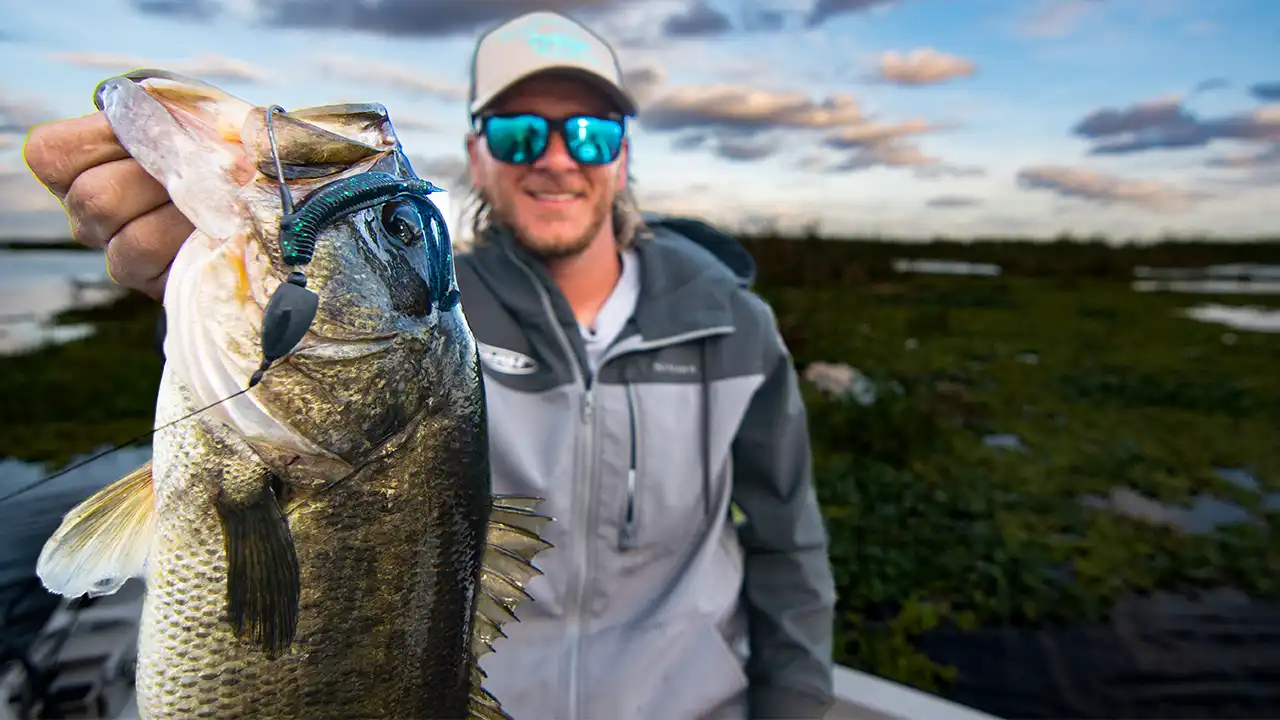Fishing matted vegetation is undoubtedly one of the most enjoyable ways to target big bass. As fun as it can be, there are several key factors that go into this bite. Lake Okeechobee stick Jessie Mizell gives 5 pro tips for punching matted grass that will help you the next time out on the water.
TACKLE USED:
- PLASTIC: 13 Fishing Rabbit Ear Tail Invader Buy at Tackle Warehouse
- WEIGHT – Fitzgerald Fishing Tungsten Flippin’ Weight, 1-ounce Buy at Tackle Warehouse
- HOOK – VMC Ike Approved Heavy Duty Flippin Hook, 4/0 Buy at Tackle Warehouse
- BEAD – Fitzgerald Fishing Flippin’ Bead Buy at Tackle Warehouse
- STOP – VMC Sinker Stops Buy at Tackle Warehouse
- ROD – 13 Fishing Omen Black 3 Casting Rod, 7’11” Heavy Buy at Tackle Warehouse
- REEL – 13 Fishing Concept A2 Casting Reel, 8.3:1 Buy at Tackle Warehouse
- LINE – Fitzgerald Vursa Braid Green, 65-pound Buy at Tackle Warehouse
- FISH ATTRACTANT SPRAY – BANG Fish Attractant 5oz Aerosol Spray Buy at Tackle Warehouse
Mizell’s 5 tips to becoming a better puncher:
- Using fish spray as lubricant. Fish spray will help with two things. Obviously, scenting your bait is never a bad idea, especially when fishing around thick cover where visibility is sometimes limited. Mizell’s main purpose for using fish spray, however, is to allow it to act as a lubricant. Slicking your soft plastic up will help the bait slip through the thickest matted vegetation.
- Pattern the fish. Patterning is key when it comes to punching matted vegetation. So finding out their positioning within the mat on any given day is essential. Mizell says that on most days, bass will be located either right on the edge or right in the heart of the mat. Diving in even deeper, figuring out if they are right under the mat or closer to bottom, can pick you up a couple of extra bites.
- Watch the weather. Keeping a close eye on the forecast is something Mizell does throughout the year, but especially in the winter. Cold fronts will often send fish to matted vegetation in search of warmer water. These are the best opportunities to have a hay day. Conversely, warmer extended forecasts may spread fish out a bit more and force you to try different tactics.
- Finding the right cover. Mizell is very specific about finding the “right” type of mat to punch. The keys to a good mat are being hollow, with little to no vegetation under the canopy of the mat, and having a hard sand bottom. Cane grass is a very good indicator of providing that good, hard bottom.
- Quiet is key. Being stealthy is a huge component of hand-to-hand combat with these fish. Getting close enough to the mat to fish it effectively, but without spooking the fish, is a skill that takes some practice. Mizell says having a solid and quiet trolling motor is the first place to start when punching mats.












